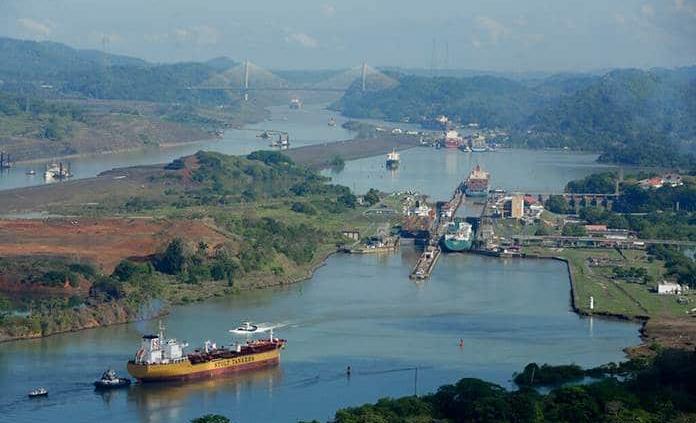RIO DE JANEIRO, BRAZIL – The expansion of the Panama Canal celebrated five years of operations this Saturday, since the new locks that allow the passage of larger ships were inaugurated in 2016, the interoceanic waterway reported.
The expansion strengthened “the competitiveness of the service offered by the Panama Canal,” brought “economies of scale,” and attracted new markets such as liquefied natural gas ships, the waterway explained in a statement.

“In these five years, we went from the learning stage to reach the consolidation phase of an efficient and safe service to our customers, while increasing our direct contributions to the country through the National Government by virtue of the operation of the new locks,” said Administrator Ricaurte Vásquez.
In June 2016, the Panama Canal, through which 6% of world trade passes, put into service its first expansion, a work costing at least US$5.6 billion and which began construction in 2007.
The first ship to transit was the Chinese Cosco Shipping Panama, with a capacity for 9,400 containers, through the Agua Clara lock (Atlantic), and paid some US$586,000 in tolls.
The expansion of the Panama Canal, considered a jewel of modern engineering, was approved in a referendum after a resounding “yes” with 77.8% of the votes in favor.
Since the inauguration of the “neo-Panamax” locks, some 13,700 ships have transited, representing 28% of the transits in this period, 54% of the cargo volume, and 58% of the Canal’s toll revenues, according to figures from the interoceanic waterway.
According to the Canal, container carriers are the main customer of the expanded Canal with 42% of transits, followed by LNG carriers at 22%, and dry bulk carriers, 15%.
“When we envisioned the expansion, we thought that the maximum capacity of the container ships we would serve would be 12,000 containers, but today we transit ships with the capacity to load up to a little more than 15,000 containers,” stated Deputy Administrator Ilya Espino de Marotta.
According to the Panama Canal, its customers were “empowered” thanks to the “increase in the length allowed in the neo-Panamax locks.” Since last May, the maximum length to transit through the new locks went from 367.28 meters (1,205 feet) to 370.33 meters (1,215 feet), which allows a large part of the world’s fleet of container ships (96.8%) to navigate the route.
“This 2020 experience, impacted by the pandemic, has strengthened us, and we must record it in our history as an extraordinary achievement of this great Panama Canal team that provided uninterrupted service to global trade,” said the general foreman of Locks Operations, Jorge Pitti.
The Panama Canal, which connects more than 140 maritime routes and 1,700 ports in 160 countries, contributed US$1.8 billion to the treasury in 2020, another record figure since the inauguration of the expansion.

